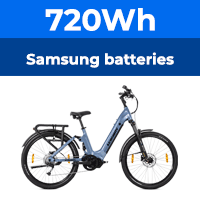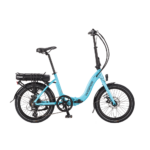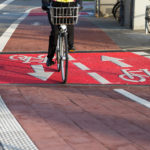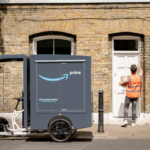If you’ve ever wondered how to make your eBike go faster without buying an entirely new model, you’re not alone. As eBikes grow in popularity for commuting and fun rides, many riders want a little extra thrill. I recently transformed my standard 36V commuter into a fast eBike that now hits 60km/h—and I did it on a budget.
Understanding Your eBike's Basics
Before attempting any upgrades, it’s important to understand what your current eBike can and cannot do.
Most stock eBikes are designed for safety and efficiency, not speed. Common specs include:
These components are great for casual commutes, but they limit your top speed and acceleration. To truly boost your e-bike’s performance, you’ll need to target the battery, motor, and controller.
Cost Breakdown of Each Upgrade
One of the main concerns for DIY enthusiasts is cost. Here’s exactly what I upgraded and how much it cost me:
Total Upgrade Cost: ₹27,100 (~$330)
Compare that to buying a new high-speed eBike costing ₹80,000–1,00,000 ($1,000+), and you’ll see why this DIY project is worth it.
Realistic Speed Gains You Can Expect
After all the upgrades, here’s how my bike performed:
The acceleration was the biggest game-changer. Hills and headwinds no longer slowed me down, and cruising at 50 km/h feels effortless.
Important Tip:
Don’t expect to instantly hit top speed everywhere. Road conditions, rider weight, and tire pressure all affect performance. Still, 45–55 km/h is achievable even on normal roads.
Safety and Legal Considerations
Boosting speed comes with responsibilities:
In the end, I spent ₹27K (~$330) and turned my standard commuter into a fast, high-performance eBike that rivals premium models.
For any eBike enthusiast looking to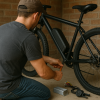 unleash their bike’s full potential, DIY upgrades are a cost-effective, rewarding way to go faster—just remember to ride safe, follow local laws, and enjoy the wind in your face.
unleash their bike’s full potential, DIY upgrades are a cost-effective, rewarding way to go faster—just remember to ride safe, follow local laws, and enjoy the wind in your face.
Understanding Your eBike's Basics
Before attempting any upgrades, it’s important to understand what your current eBike can and cannot do.
Most stock eBikes are designed for safety and efficiency, not speed. Common specs include:
- Battery: 36V, usually 10Ah–15Ah
- Motor: 250W to 350W hub motor
- Top Speed: 25–32 km/h (~15–20 mph)
- Controller: Designed to limit speed and power to comply with local laws
These components are great for casual commutes, but they limit your top speed and acceleration. To truly boost your e-bike’s performance, you’ll need to target the battery, motor, and controller.
Cost Breakdown of Each Upgrade
One of the main concerns for DIY enthusiasts is cost. Here’s exactly what I upgraded and how much it cost me:
| Upgrade | Purpose | Cost (USD approx.) |
|---|---|---|
| 48V Battery (20Ah) | Higher voltage for more speed and power | ~$145 |
| 1000W Hub Motor (Rear) | Big jump from 250W for serious speed | ~$110 |
| 48V 35A Controller | Handles the extra voltage & amps safely | ~$22 |
| Smart Display | Shows speed, voltage, and range | ~$12 |
| Upgraded Brakes | Critical for safety at higher speeds | ~$30 |
| Throttle with Pedal Assist | Smooth motor control and acceleration | ~$6 |
| Rear Rack for Battery | Securely mounts the heavy new battery | ~$4 |
Total Upgrade Cost: ₹27,100 (~$330)
Compare that to buying a new high-speed eBike costing ₹80,000–1,00,000 ($1,000+), and you’ll see why this DIY project is worth it.
Realistic Speed Gains You Can Expect
After all the upgrades, here’s how my bike performed:
- Before Upgrades: 32 km/h top speed, 45 km range
- After Upgrades: 60 km/h top speed, 70 km range with pedal assist
The acceleration was the biggest game-changer. Hills and headwinds no longer slowed me down, and cruising at 50 km/h feels effortless.
Important Tip:
Don’t expect to instantly hit top speed everywhere. Road conditions, rider weight, and tire pressure all affect performance. Still, 45–55 km/h is achievable even on normal roads.
Safety and Legal Considerations
Boosting speed comes with responsibilities:
- Braking: Invest in strong disc brakes to handle higher speeds.
- Local Laws: Many regions classify eBikes over 25–28 mph (40–45 km/h) as mopeds or motorbikes.
- Battery Safety: Only use certified batteries and controllers to prevent overheating.
In the end, I spent ₹27K (~$330) and turned my standard commuter into a fast, high-performance eBike that rivals premium models.
For any eBike enthusiast looking to
 unleash their bike’s full potential, DIY upgrades are a cost-effective, rewarding way to go faster—just remember to ride safe, follow local laws, and enjoy the wind in your face.
unleash their bike’s full potential, DIY upgrades are a cost-effective, rewarding way to go faster—just remember to ride safe, follow local laws, and enjoy the wind in your face.

